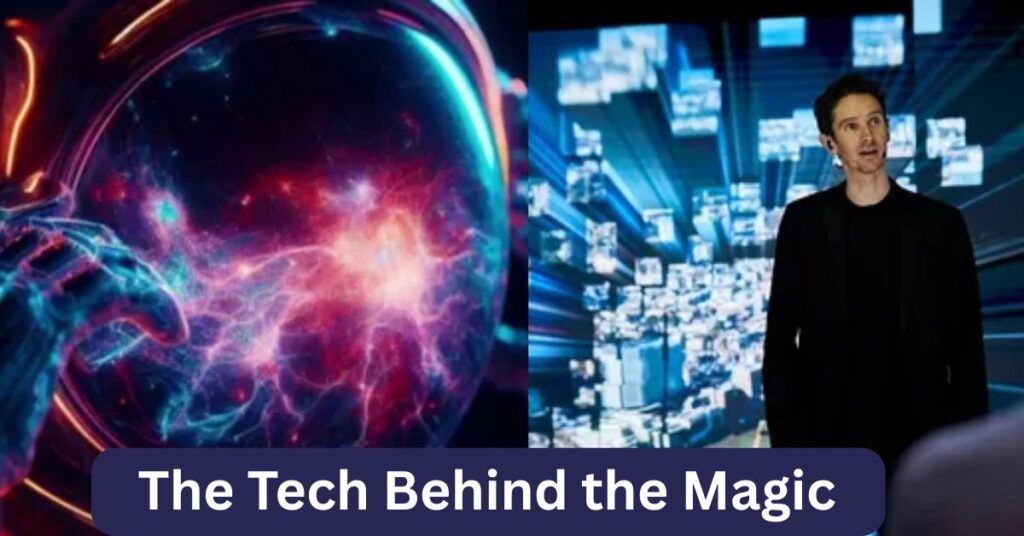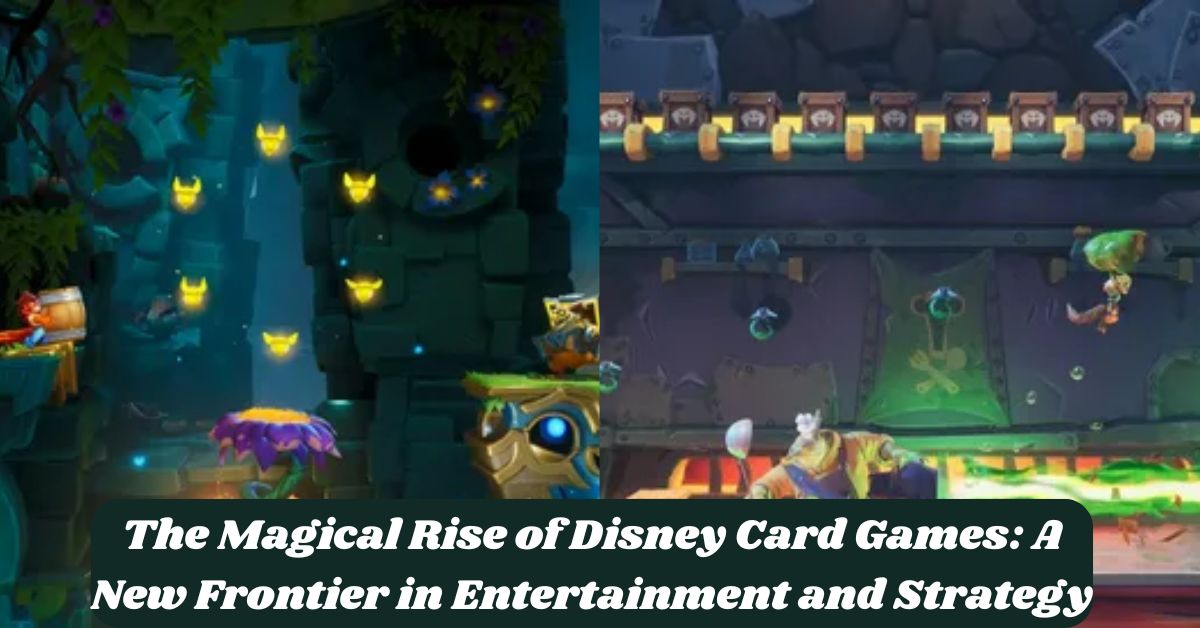In the ever-evolving world of tabletop gaming, a magical new trend has captured hearts across generations. Disney card games have emerged as powerful contenders in the realm of strategic entertainment. These games blend beloved characters with engaging gameplay to create experiences that resonate with fans young and old.
The fusion of nostalgia and innovation has positioned Disney as a serious player in the trading card games market. Let’s explore how these enchanting card games are reshaping entertainment and bringing families together through the power of play and imagination.
The Allure of Disney in a Deck
The appeal of Disney in card game format isn’t hard to understand. We all know those iconic characters from our childhood. Mickey Mouse, Cinderella, and Buzz Lightyear aren’t just familiar faces. They carry emotional weight across generations. This built-in connection gives Disney card games an immediate advantage in the market.
What makes these games special is how they use Disney’s rich storytelling tradition. The games don’t just slap character images on cards. They weave Disney narratives into the very fabric of gameplay. Each card represents a piece of the Disney universe fans know and love. This creates an instant connection with players before they even understand the rules.
The games blend this emotional appeal with genuine strategic depth. Players can build decks around their favorite movies or characters. This personal connection keeps fans engaged long-term. The balance between accessibility and depth is carefully maintained. New players can jump in quickly while experienced gamers discover layers of strategy.
Disney’s vast library of characters and stories provides endless material for game expansions. From classics to modern hits, the potential for new content seems limitless. This versatility ensures the games stay fresh and exciting. With each new release, players can explore different corners of the Disney universe through strategic gameplay.
The visual design of these cards deserves special mention. The card rarities system gives collectors something to chase. Meanwhile, the stunning artwork captures the essence of Disney’s visual style. This combination of gameplay and collectibility creates a powerful hook for different types of fans.
Disney Lorcana: A Game Changer
Among the various Disney card offerings, one title stands above the rest. Lorcana, developed in partnership with Ravensburger, has quickly established itself as a serious contender in the trading card game world. This game isn’t just another licensed product. It represents Disney’s committed entry into the competitive TCG market dominated by giants like Pokémon and Magic: The Gathering.
The game introduces players to a unique role as “Illumineers” who summon versions of Disney characters. These characters appear as “glimmers” pulled from different storylines and realities. This creative approach allows familiar characters to appear in new contexts and forms. The game mechanics revolve around a system called “six inks” that function similarly to resource systems in other TCGs.
What sets Lorcana apart is its deep commitment to narrative integration. Each expansion doesn’t just add new cards. It continues an overarching story that gives context to the gameplay. This storytelling approach transforms each match into part of a larger experience. Players aren’t just trying to win. They’re participating in an unfolding Disney universe.
The character abilities in Lorcana reflect the personalities and stories of the Disney figures they represent. This thoughtful design creates a sense of authenticity that resonates with longtime fans. Cinderella’s abilities might reflect her transformation story. Maleficent’s powers could emphasize her magical dominance. These thematic connections make the strategic mechanics more intuitive and memorable.
The deck building possibilities in Lorcana offer tremendous creative freedom. Players can construct decks based on favorite films, character types, or purely competitive considerations. This flexibility encourages experimentation and personal expression. It also ensures that no two matches feel exactly the same. The game rewards both creativity and strategic thinking.
Lorcana has quickly developed a competitive scene with regular tournaments and organized play. This community infrastructure has helped establish the game as more than a passing fad. The growing tournament scene shows Disney’s long-term commitment to supporting the game and its players.
The Tech Behind the Magic

Today’s Disney card games exist at the intersection of physical and digital worlds. Modern technology enhances the traditional card game experience in several important ways. These tech integrations make the games more accessible and engaging for digital-native players.
Companion apps now support the physical card experience with useful features. Players can scan cards to build digital collections. They can construct and test decks before purchasing physical cards. Some apps even include augmented reality features that bring static cards to life. These digital tools extend the experience beyond the tabletop.
Online platforms have made remote play possible, connecting fans across distances. Games like Lorcana benefit from digital communities where players can share strategies and organize matches. This digital integration has been crucial during times when in-person gatherings were limited. It has helped maintain momentum for the games even in challenging circumstances.
Data analytics built into some platforms provide insights that elevate gameplay. Players can track their performance, analyze their favorite strategies, and identify areas for improvement. This statistical approach appeals to competitive players who want to refine their technique. It adds another layer of engagement for strategically-minded fans.
Tech-enhanced gameplay features are increasingly common in the Disney card game ecosystem. QR codes might link to animated character moments. Digital tournaments might offer exclusive rewards. These innovations blend traditional card game appeal with modern technological convenience. The result is an experience that feels both nostalgic and forward-looking.
Future developments may further blur the line between physical and digital play. We might see more augmented reality integration or even virtual reality tournaments. These technological possibilities ensure that Disney card games remain relevant in an increasingly digital entertainment landscape.
The Social and Collectible Boom
Beyond gameplay, Disney card games have sparked a thriving collector culture. Rare cards from games like Lorcana have created a vibrant secondary market with some cards fetching impressive prices. This collectible aspect attracts people who appreciate the investment potential of limited-edition items.
Social media has amplified this collecting phenomenon. Unboxing videos, rare card reveals, and collection showcases generate millions of views online. This digital buzz creates excitement around new releases and drives interest in the collectibles market. The visual nature of Disney products makes them particularly shareable across platforms like Instagram and TikTok.
The collecting community extends beyond purchasing and trading. Fans create display cases, protective solutions, and storage systems specifically designed for these cards. This ecosystem of accessories represents its own market adjacent to the games themselves. The care collectors show reflects the emotional and financial value they place on their collections.
Limited edition releases create moments of excitement within the community. Special promotional cards or holiday-themed sets become instant collector’s items. This strategy of controlled scarcity maintains interest and creates talking points. It keeps the community engaged between major releases and expansions.
Grading services have emerged to authenticate and evaluate the condition of valuable cards. This formalization of the secondary market mirrors practices seen in established collectible categories like sports cards and comic books. It signals the maturation of Disney card games as serious collectibles with lasting value.
The nostalgic engagement factor cannot be overlooked in explaining this boom. Adults who grew up loving Disney now have disposable income to spend on high-quality collectibles. This emotional connection to childhood memories drives purchasing decisions that might seem irrational from a purely economic perspective.
Parents, Kids, and Community

One of the most remarkable aspects of Disney card games is their cross-generational appeal. Parents who grew up watching Disney classics can share these characters with their children through interactive gameplay. This shared experience builds family bonds around a mutual interest.
Local game stores increasingly host family-friendly events centered on games like Lorcana. These gatherings create safe spaces for younger players to learn the games and make friends. The community atmosphere is typically more welcoming than the sometimes intense competition found in other TCG environments.
Schools and libraries have begun incorporating these games into educational and social programs. The strategic thinking and reading skills required provide cognitive benefits. Meanwhile, the familiar characters make the learning process feel like play rather than work. This educational angle helps the games gain acceptance with parents who might otherwise limit gaming time.
The inclusive nature of Disney’s content makes these card games accessible across demographics. Characters representing diverse backgrounds and stories ensure that many players can find representation. This inclusivity helps build a broader, more diverse player community than some traditional TCGs have developed.
Family tournaments offer opportunities for parents and children to compete together or against each other. These events celebrate the intergenerational nature of the games and foster healthy competition. They reinforce the idea that these games aren’t just for kids or just for adults. They truly bridge age gaps.
Community building extends online through forums, social media groups, and streaming channels. Parents often participate alongside their children in these digital spaces. This shared interest creates conversation topics and bonding opportunities that extend beyond the actual gameplay sessions.
The Future of Disney Card Games
Looking ahead, the future of Disney card games appears bright with possibilities. Industry analysts predict continued expansion of product lines and gameplay innovations. Disney’s vast catalog of intellectual property provides nearly limitless material for future sets and mechanics.
Digital versions of these games seem inevitable as technology continues to evolve. Mobile adaptations would make the games more accessible to players unable to attend physical events. These digital platforms could incorporate features impossible in physical cards, like animation and sound effects.
Blockchain technology might eventually influence how collectible cards are authenticated and traded. Digital ownership could transform how rare cards are verified and transferred between collectors. While controversial in some gaming circles, these technologies could add new dimensions to the collecting experience.
The entertainment integration potential is substantial for properties like Lorcana. We might see animated series, books, or even films that tie into the game’s storylines. This transmedia approach would follow successful models established by franchises like Pokémon. It would deepen engagement with the game world beyond the cards themselves.
Competitive tournaments will likely grow in scale and prize support as the games mature. Professional play could emerge with sponsored players and teams. This evolution would mirror the development of esports in the digital gaming world. It would create aspiration and spectatorship around high-level play.
Virtual reality could eventually transform how these games are played and experienced. Imagine stepping into a virtual Disney environment where cards come to life in three dimensions. This technology could create truly immersive gameplay experiences that blend the physical cards with digital magic.
Frequently Asked Questions
How much does it cost to start playing Disney Lorcana?
A starter deck costs around $15-20, which includes everything needed for basic play. Building a competitive collection might require an investment of $100-200 over time.
Are Disney card games appropriate for young children?
Most Disney card games are designed for ages 8+, though younger children can enjoy simplified versions with parental guidance. The Disney themes keep content family-friendly.
How often are new Disney card game expansions released?
For games like Lorcana, new expansions typically release every 3-4 months, adding fresh characters and mechanics to keep the gameplay evolving.
Do Disney card games have real collector value?
Yes, rare cards have shown significant appreciation in value. Some limited-edition Lorcana cards have sold for hundreds of dollars on the secondary market.
Can Disney card games be played digitally?
Currently, official digital versions are limited, but companion apps exist. Industry trends suggest full digital adaptations may arrive in the near future.
Conclusion
The rise of Disney card games represents a perfect storm of nostalgia, strategic gameplay, and collectibility. Games like Lorcana have successfully tapped into the emotional connection people have with Disney characters while delivering genuinely engaging gameplay experiences. The cross-generational appeal has created unique communities where parents and children share a hobby that bridges age gaps.
The technological innovations supporting these games ensure they remain relevant in an increasingly digital world. Meanwhile, the collecting aspect provides long-term engagement beyond the gameplay itself. Disney’s vast library of characters and stories provides nearly unlimited potential for future expansions and innovations.










